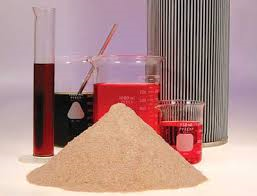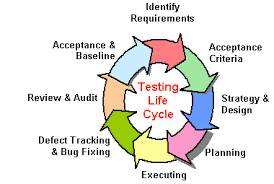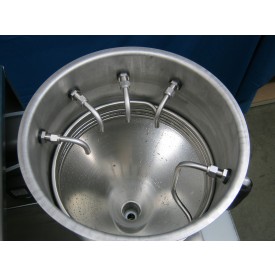This is the third in a series of articles outlining the system requirements and considerations when using specialty fluids for product test stands.
Contamination Test Fluids
Most of our time and energy is spent trying to reduce contamination within hydraulic test systems. One type of test, however, goes in the opposite direction – contamination testing. In this type of testing, we introduce exact/controllable amounts of contaminates into the fluid to measure the effects on the test part. Also called Life Testing, Abuse Testing, Accelerated Decay Testing, Wear Testing, and even “Mud” testing, this type of testing can provide detailed data on how the unit under test reacts to contaminates over time. This can provide component wear information in a number of hours vs several years of use.
Contaminate Materials
The contaminate material we can introduce into a test range from very small particles to very large particles in low parts per million (PPM). Generally, the particle size and PPM are very closely controlled and monitored during the testing.  The materials introduced vary as widely as the types of test on which can be performed. Arizona Road Dust, Iron Oxide Powder, Graphite Particles, Iron Chips and Iron Powder, Aluminum, various types of Steel, Fly Ash, Talc, and Quartz, to name a few, are pre-measured and introduced into the fluid at specific levels and at specific time throughout the test.
The materials introduced vary as widely as the types of test on which can be performed. Arizona Road Dust, Iron Oxide Powder, Graphite Particles, Iron Chips and Iron Powder, Aluminum, various types of Steel, Fly Ash, Talc, and Quartz, to name a few, are pre-measured and introduced into the fluid at specific levels and at specific time throughout the test.
The most common contaminate is Arizona Road Dust. This is a very precisely controlled contaminate and is measured in number of particles and particle size. Arizona sand has been used for testing filtration, automotive, and heavy equipment components for decades. A variety of names have been applied to Arizona sand including Arizona Road Dust, Arizona Silica, AC Fine and AC Coarse Test Dusts, SAE Fine and Coarse Test Dusts, J726 Test Dusts, and, most recently, ISO Ultrafine, ISO Fine, ISO Medium and ISO Coarse Test Dusts. Many military and industrial specifications require use of Arizona Test Dust and refer to one or more of the above names. Purchased by the ounce, it can be added into the test fluid for very repeatable test results component-to-component.
Types of Contamination Testing
There are several types of contaminate testing which usually try to mimic the normal working conditions of the component. The most common types of contamination testing are:
 Life Testing – Contaminates are introduced into the fluid, first at low PPM levels, then slowly increased throughout the test and the normal operational parameters of the component. This test can provide failure or wear data of the component under normal use.
Life Testing – Contaminates are introduced into the fluid, first at low PPM levels, then slowly increased throughout the test and the normal operational parameters of the component. This test can provide failure or wear data of the component under normal use.
Accelerated Decay Testing – Similar to Life Testing, but with additional contaminates introduced at an accelerated rate to provide Life Cycle Data within a number of hours vs a number of years.
Abuse Testing – Abuse testing introduces a large amount of contaminate into the fluid to determine the ultimate failure mode within a few hours. This can be helpful to determine the weak points within a design or a component’s material.
High- and Low-temperature Testing – Contamination testing can be combined with temperature testing to provide actual data results under actual operational conditions.
System Design Considerations
Many test system suppliers, unfamiliar with contamination testing, fail when faced with the considerations associated with system design. Proper test system design is critical and many specific considerations must be taken into account when introducing large amounts of contaminates into the fluid. These include, but are not limited to, suspension of the particles, elimination of “catch basins,” and component selection.
Reservoirs – Standard rectangular reservoirs cannot be used due to the settling effect of contaminates in the corners of the reservoirs. Conical reservoirs, with constant fluid velocity, can provide a mixing solution for the fluid. In addition, the conical design will maintain contaminate suspension and not allow for any collection of particles.
Conductors – The routing and implementation of the conductors is one of the most critical design requirements in contamination testing. The conductors must be sized correctly to maintain a constant velocity of the fluid during operation. Changes in velocity can result in “wetted out” contaminate and provide varying test results. In addition to sixing demands, the conductors must utilize smooth bends. Any sharp bends, or ninety degree fittings, can also result in velocity changes within the test circuit.
Special Components – In addition to the special reservoirs, the heaters, heat exchangers, and manifolds must be designed to avoid sharp corners and collection points. The most important design consideration, which many supplier neglect, is that the suspension of particles must be maintained throughout the system. The system must provide a constant level of contaminant and prevent the “blob” of released contaminates during operation.
Component Selection – One additional factor is the selection of standard control components. Control valves, pumps, and component material(s) must be able to perform longer than the standard number of hours (weeks or months) for which the test has been specified to run. Simply put, this section comes with the experience of doing contamination test system and the knowledge obtained with what works and what doesn’t.
Other Requirements
Other requirements, which must be taken into consideration, are:
Draining and flushing between life cycles – Easy and controllable methods must be available when changing the fluid between life cycles. The removal of all contaminates is critical to be able to start the test with clean fluid.
Storage and collection of testing fluids – In many cases, the life test fluid can be re-used for abuse testing. The collection and storage of this fluid can save a tremendous amount of money for the long-term testing lab.
Particle Counters - Special particle counters are required due to the large particles generally introduced into contamination testing. There are a limited number of units on the market which can handle particles above 100 micron.
To avoid the pitfalls of contamination testing, rely on Genuen's (formerly Wineman Technology) experience for all of your contamination test systems. For more information on please contact Genuen today.
Read the next blog in this series here.

